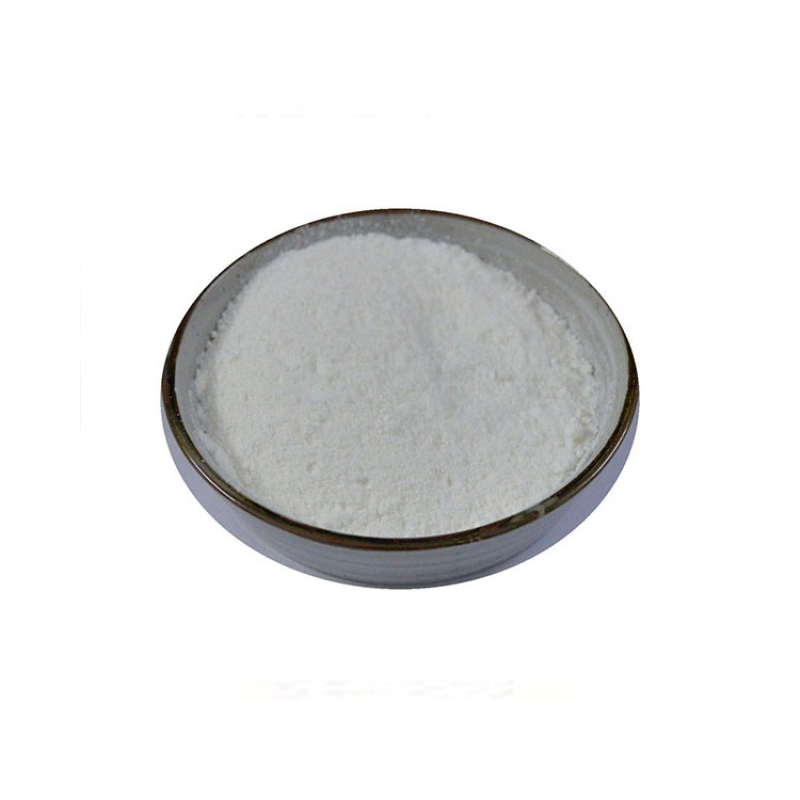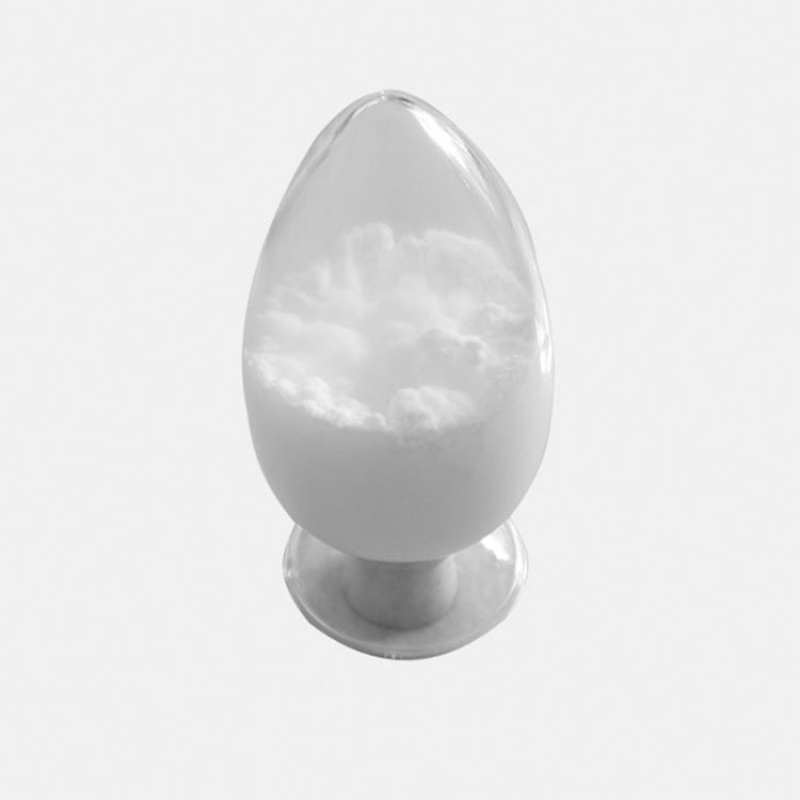Hexane CAS# 110-54-3Hexane is a incredibly flammable, colorless, volatileliquid with a gasoline-like odor. The water/odor threshold is0.0064 mg/L and the air/odor threshold is 230- 875 mg/m'Molecular weight= 86.20; Specific gravity (H2O:1)= 0.66; .Boiling factor = 68.9℃; FreezingMelting point= -139.49C; .Relative vapordensity (air= 1)= 3.0; V aporpressure = 124 mmHg at 20℃; Flash point=一21.6℃ (cc);Autoignition temperature = 225℃.Explosivelimits: .LEL= 1.1%, UEL= 7.5%.
Contact Now
Products Description of 5-CyanoindoleCAS#15861-24-2Off-white crystals, melting point 106-107℃.5-Cyanoindole Chemical PropertiesMelting point 106-108 °C(lit.)Boiling point 249.72°C (rough estimate)density 1.1777 (rough estimate)refractive index 1.6211 (estimate)storage temp. Keep in dark place,Inert atmosphere,Room temperaturesolubility Chloroform, Hexane, Methanolform Crystalline Powderpka15.62±0.30(Predicted)color White to slightly yellowWater Solubility Soluble in chloroform, hexane and methanol.
Contact Now
Products Description of Trimethyl borate CAS#121-43-7Moisture-sensitive liquid, fuming in the air. Melting point -29.3℃, boiling point 68-69℃, forms azeotropic mixture with methanol, azeotropic point 55℃, relative density (20/4) 0.920, refractive index (nD25) 1.3543 (1.3548). Very flammable, flash point -1℃. Miscible with ether, methanol, tetrahydrofuran, isopropylamine and hexane.
Contact Now
Products Description of Bitertanol CAS#55179-31-2The pure product is a colorless crystalline solid. m.p. 125~129℃ (diastereomer A is 136.7℃, B is 145.2℃, and the low eutectic of A and B is 118℃). The vapor pressure at 20℃ is <1.0×10-3Pa [A is 3.8×10-3Pa, B is 3.2×10-3Pa (100℃)]. Solubility at 20℃: dichloromethane 100-200g/L (A is 200-500g/L, B is 50-100g/L), isopropanol 30-100g/L [20-50g (A or B)/L], toluene 10-30g/L [A is 10-20g/L, B is 1-2g/L], n-hexane 1-10g/L [≤10g (A or B)/L], water 5mg/L [2.9mg (A)/L, 1.6mg (B)/L]. Partition coefficient 126000 (A), 25000 (B).
Contact Now
Products Description of 1-Chloro-6,6-dimethyl-2-heptene-4-yne CAS#126764-17-8An intermediate in the synthesis of Terbinafine.1-Chloro-6,6-dimethyl-2-heptene-4-yne Chemical PropertiesBoiling point 207-208°Cdensity 0.946Fp 75°Crefractive index 1.4850storage temp. Sealed in dry,2-8°Csolubility Chloroform, Ethyl Acetate (Slightly), Hexane (Slightly), Methanol (Slightly)form Oilcolor Colourless to Pale YellowStability:Light SensitiveInChIInChI=1S/C9H13Cl/c1-9(2,3)7-5-4-6-8-10/h4,6H,8H2,1-3H3InChIKeyZIXABMZBMHDFEZ-UHFFFAOYSA-NSMILESC(Cl)C=CC#CC(C)(C)CCAS
Contact Now
(2-hydroxytrimethylene)bis(trimethylammonium) dichloride Chemical PropertiesMelting point 256-257 °C (decomp)Factory and Equipment ShowFast delivery timeInventory 2-3 working days New production 7-10 working days
Contact Now
Products Description of Oxalic Acid CAS#144-62-7Oxalic acid is an organic substance with the chemical formula H₂C₂O₄. It is a metabolite of organisms, a medium-strong acid, widely distributed in plants, animals and fungi, and plays different functions in different organisms. Studies have found that more than 100 plants are rich in oxalic acid, especially spinach, amaranth, beet, purslane, taro, sweet potato and rhubarb.
Contact Now
Products Description of Madecassic acid CAS#18449-41-7Madecassoside (MC) is the main active ingredient of triterpenoid saponins in Centella asiatica Urb., a plant of the Umbelliferae family. Studies have shown that MC has a wide range of pharmacological activities in vivo and in vitro, and can reduce collagen-induced arthritis inflammation, promote the proliferation of human fibroblasts cultured in vitro, treat or prevent hypertrophic scars and keloids, and protect myocardial ischemia-reperfusion injury.
Contact Now
Products Description of (-)-(R)-Mandelic Acid CAS#611-71-2D-mandelic acid is a polar molecule. Because it contains hydroxyl and carboxyl groups, the molecule has a certain degree of hydrophilicity. Since D-mandelic acid is a chiral molecule, its physical and chemical properties are affected by the stereostructure of its molecule. In addition, the acid-base properties of D-mandelic acid are also affected by the molecular structure.
Contact Now
Products Description of 1-Methylimidazole 99% CAS#616-47-7N-methylimidazole, also known as 1-methylimidazole, is mainly used as an organic synthesis intermediate, ionic liquid and resin curing agent, adhesive, etc., such as the synthesis of deoxyribonucleic acid and acetylation catalyst, as well as for casting, bonding and fiberglass. Therefore, optimizing the synthesis process of N-methylimidazole has great application value and practical significance.
Contact Now
Products Description of Decyl glucoside CAS#68515-73-1Decyl glucoside is a new type of nonionic surfactant alkyl polyglycoside (APG).
Contact Now
Products Description of Collagenase CAS#9001-12-1Collagenase, also known as collagenase and clostridial peptidase, is a protease obtained by fermentation of Clostridium histolyticum.Medical collagenase is refined from the culture fluid of Clostridium histolyticum ATCC21000.
Contact Now
Products Description of 1-Piperazinecarbaldehyde CAS#7755-92-2Oily liquid.
Contact Now
Products Description of DL-Menthol CAS#89-78-1 Menthol is a chemical agent. It is extracted from the leaves and stems of mint. It is a white crystal with a molecular formula of C10H20O. It is the main component of mint and peppermint essential oils. In the world, China and Brazil are the main natural mint producers, and the annual output of mint oil reaches 2000-3000 tons. Menthol and racemic menthol can be used as flavoring agents for toothpaste, perfume, beverages and candies.
Contact Now
Products Description of Diethylamino hydroxybenzoyl hexyl benzoate CAS#302776-68-7Diethylamino hydroxybenzoyl hexyl benzoate is an organic peroxide with strong oxidizing effect. It is easy to produce highly active free radicals during thermal decomposition. It is thermally unstable and may decompose at relatively low temperatures. During the decomposition process of diethylamino hydroxybenzoyl hexyl benzoate, a large amount of heat and gas is released, which increases the temperature and accelerates the decomposition.
Contact Now
Products Description of 2-Methylpiperazine CAS#109-07-92-Methylpiperazine is a chemical substance with the molecular formula C5H12N2.
Contact Now
Products Description of Saccharin CAS#81-07-2Pure saccharin is a non-toxic, non-caloric, non-nutritious sweetener that is not absorbed by the human body. Taking advantage of its sweet taste, it is used as a food additive to replace sugar. As a food additive, saccharin has no nutritional value to the human body except that it causes a sweet feeling in the taste buds and the sweetness of the taste can meet the requirements of consumers.
Contact Now
Products Description of AzuleneCAS#275-51-4Aurobinol is a structural isomer of naphthalene, which appears as small blue leaves or monoclinic flaky crystals with the smell of naphthalene. It is soluble in general organic solvents but insoluble in water.
Contact Now
Products Description of Sulfolane CAS#126-33-0Sulfolane solvent has high solubility for aromatic hydrocarbons, good selectivity, good thermal stability, low vapor pressure, low toxicity and no corrosion to carbon steel. Therefore, sulfolane extraction technology has become the most widely used aromatic hydrocarbon in the world.
Contact Now
Petrolatum CAS#8009-03-8Petrolatum (Vaseline) is the malthenes purified from lubrication oil, the combination of residue oil and cerate. It is an necessary lubricant for medicines, cosmetics, first-class chemical uncooked substances and precision instruments. In China, foremost vaseline merchandise encompass normal vaseline, industrial vaseline and clinical vaseline.
Contact Now
Products Description of Meloxicam CAS#71125-38-7Meloxicam is a non-steroidal antipyretic, analgesic and anti-inflammatory drug. It is not a hormone drug. It has strong anti-inflammatory, analgesic and antipyretic effects. It can selectively inhibit the activity of cyclooxygenase-2 (COX-2), thereby blocking the synthesis of prostaglandins. Its inhibitory effect on the biosynthesis of prostaglandins in inflammatory sites is stronger than that on the biosynthesis of prostaglandins in the gastric mucosa or kidneys. It is safer than other NSAIDs.
Contact Now
Products Description of Antioxidant 1330 CAS#1709-70-2Hindered phenol antioxidant 330 is a white crystal powder with a melting point above 244°C and is insoluble in water. The solubility (g/100g solvent) in certain solutions at 18°C is: benzene 20, methylene chloride 31.9, methylcyclohexane Alkane 1.7, methanol 0.2, isopropyl alcohol 0.1.
Contact Now
Products Description of Hydrogenated castor oil CAS#8001-78-3Castor oil is flammable but not inflammable, almost insoluble but soluble in ethanol, slightly soluble in aliphatic hydrocarbons, and castor oil is slightly volatile, so be careful when storing it.
Contact Now
Products Description of Pyromellitic Dianhydride CAS#89-32-7The English name of pyromellitic dianhydride is Pyromellitic Dianhydride (abbreviated as PMDA, the same below), which is mainly used to synthesize polyimide.
Contact Now


































